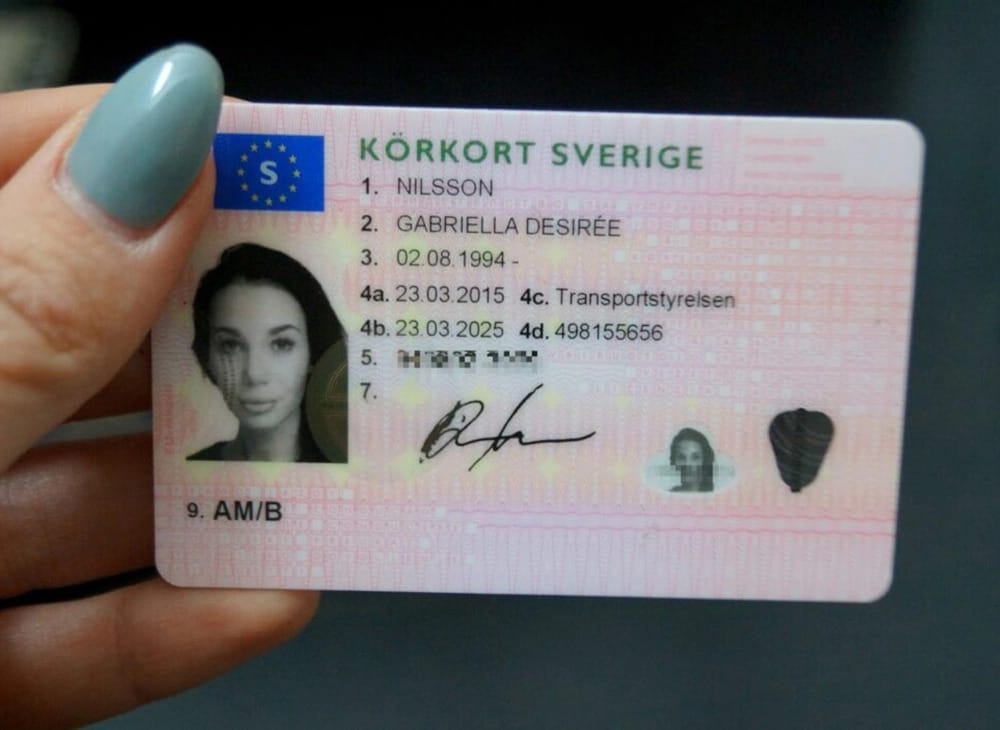What Is It That Makes Fast Driver's License Online So Famous?

본문

Navigating the World Without a Driver's License: Exploring Alternatives and Implications
In today's world, where movement is a cornerstone of day-to-day life, the idea of living without a driver's license might appear difficult. However, for some people, the choice to forgo a driver's license is a conscious option driven by different factors, including ecological concerns, expense, and individual preference. This article explores the alternatives to driving and the ramifications of living without a driver's license, providing an extensive guide for those considering this way of life.
Understanding the Decision
Choosing not to have a driver's license is a personal decision that can originate from several reasons. For some, it's a dedication to reducing their carbon footprint and promoting sustainable living. Others discover the cost of owning and preserving a lorry expensive, while some simply choose the convenience and flexibility of other modes of transportation. No matter the inspiration, living without a driver's license needs cautious planning and a determination to adjust.
Alternatives to Driving
Mass transit
- Buses and Trains: köpa vårt C-körkort Göteborg [careerconnect.mmu.edu.my] Public transportation systems, such as buses and trains, are frequently the most reliable and cost-efficient options. They are accessible in a lot of urban areas and supply a structured way to browse cities and rural regions.
- Subway and Light Rail: In bigger cities, subways and light rail systems provide quick and effective travel, often bypassing rush hour and reducing travel time.
Ride-Sharing Services
- Uber and Lyft: These popular ride-sharing apps provide on-demand transport, making it easy to navigate without a car. They are especially helpful for late-night travel and in locations with restricted public transportation.
- Carpooling: Joining or forming carpool groups can lower costs and ecological impact. Numerous neighborhood platforms and apps facilitate carpooling for regular commutes.
Bicycles and E-Scooters
- Bicycles: Cycling is a healthy and environment-friendly way to travel, especially for shorter ranges. Many cities have dedicated bike lanes and bike-sharing programs to encourage this mode of transport.
- Electric Scooters: E-scooters are a trendy and convenient alternative for fast, brief journeys. They are frequently readily available through rental services in urban locations and can be an enjoyable alternative to standard modes of transport.
Strolling and Jogging
- Walking: For those living in walkable areas, walking is an easy and efficient method to stay active and navigate. It's totally free, needs no unique devices, and is excellent for the environment.
- Jogging: Similar to walking, jogging can be a healthy and low-priced method to travel, particularly for brief ranges.
Electric and Hybrid Vehicles
- Electric Scooters and Bikes: For those who still desire the benefit of an individual car but are concerned about the environment, electric scooters and bikes are a practical alternative. They are low-maintenance and produce fewer emissions.
- Hybrid Cars: If the decision to avoid a driver's license is mainly due to ecological issues, but the need for a car is inevitable, hybrid lorries offer a middle ground. They integrate traditional gasoline engines with electrical motors to minimize fuel consumption and emissions.
Telecommuting and Remote Work
- Work from Home: Many business now use remote work choices, allowing workers to work from home or other locations. This can considerably decrease the need for day-to-day commuting and the associated expenses.
- Virtual Meetings: Technology has actually made it possible to conduct business conferences and other interactions essentially, further reducing the requirement for travel.
Ramifications of Living Without a Driver's License
Financial Savings
- Lowered Vehicle Costs: Not having a car implies preventing expenditures such as car payments, insurance coverage, upkeep, and fuel.
- Mass Transit Costs: While public transport does have expenses, they are generally lower than those connected with owning a car.
Ecological Impact
- Lower Carbon Emissions: By preventing making use of personal automobiles, individuals can considerably reduce their carbon footprint, contributing to a more sustainable environment.
- Minimized Traffic Congestion: Fewer vehicles on the road can result in lowered traffic congestion, making travel more effective for everyone.
Health Benefits
- Increased Physical Activity: Using alternatives like strolling, jogging, and biking can improve physical health and mental wellness.
- Reduced Stress: Avoiding the day-to-day inconveniences of driving, such as traffic and parking, can cause a more relaxed and stress-free way of life.
Social and Community Engagement
- Neighborhood Connections: Relying on mass transit or ride-sharing services can promote a sense of community and social interaction.
- Assistance for Local Businesses: Walking or cycling to local organizations can assist support the regional economy and lower dependence on large, environmentally hostile corporations.
Legal and Practical Considerations
- Recognition Issues: In lots of nations, a driver's license acts as a primary type of identification. Individuals without a license may require to carry alternative forms of ID, such as a passport or state-issued ID card.
- Travel Restrictions: Without a driver's license, travel to remote areas or locations with minimal mass transit can be challenging. Preparation ahead and utilizing alternative transport approaches is important.
FAQs
Q: How can I navigate if I reside in a backwoods without a driver's license?
- A: In backwoods, alternatives like ride-sharing services, carpooling, and public transportation may be limited. Think about joining community groups or köpa Körkort Online Köpa A1 och A2 Körkort Online och A2 Köpa taxilicens Körkort Online (git.itk.academy) platforms to find local carpooling alternatives. Electric scooters and bikes can also be useful for shorter distances. Additionally, lots of backwoods have neighborhood transport services that can be accessed for vital trips.
Q: Can I still take a trip internationally without a driver's license?
- A: Absolutely. A driver's license is not needed for a lot of international travel. However, you may require a passport or other kinds of recognition. For countries where driving is essential, you can rent a car with a valid driver's license or use local transportation services.
Q: What are the finest apps for discovering ride-sharing and carpooling choices?
- A: Popular apps for ride-sharing include Uber, Lyft, and Bolt. For carpooling, Waze Carpool, Ridester, and Scoop are extremely recommended. These apps often provide real-time information on available trips and help connect you with chauffeurs heading in the exact same instructions.
Q: How do I manage without a driver's license if it is needed for many kinds of identification?
- A: In numerous places, a state-issued ID card or a passport can serve as a primary form of identification. It's likewise a good concept to carry numerous types of ID, such as a charge card or a citizen registration card, to guarantee you are prepared for various circumstances.
Q: Are there any health threats associated with utilizing public transport?
- A: While public transportation can expose people to a higher danger of transmittable illness, particularly in congested conditions, the benefits typically surpass the dangers. Practicing excellent hygiene, such as washing hands regularly and wearing a mask, can help reduce these dangers. Additionally, lots of public transport systems have executed precaution to safeguard travelers.
Q: What are the ecological benefits of not driving a car?

- A: Not driving a car can considerably decrease your carbon footprint. Cars are a major source of greenhouse gas emissions, and by deciding for mass transit, biking, or walking, you can add to a much healthier environment. This also assists reduce air pollution and traffic jam, enhancing overall quality of life.
Living without a driver's license is a feasible and frequently helpful choice for many individuals. By checking out and making use of alternative modes of transportation, one can save money, decrease their environmental impact, and improve their health and wellness. While there are difficulties, such as browsing identification and travel concerns, the benefits frequently make the effort rewarding. Whether driven by personal worths or practical considerations, the decision to forgo a driver's license can cause a more sustainable and satisfying lifestyle.
Extra Resources
- Mass Transit Apps: Transit, Moovit, Citymapper
- Biking and Walking Apps: Strava, MapMyRide, Google Maps
- Community Carpooling Platforms: Waze Carpool, Ridester, Scoop
- Remote Work and Telecommuting Tools: Zoom, Microsoft Teams, Slack
By embracing these options, individuals can create a lifestyle that lines up with their worths and requirements, contributing to a more sustainable and connected world.

댓글목록0